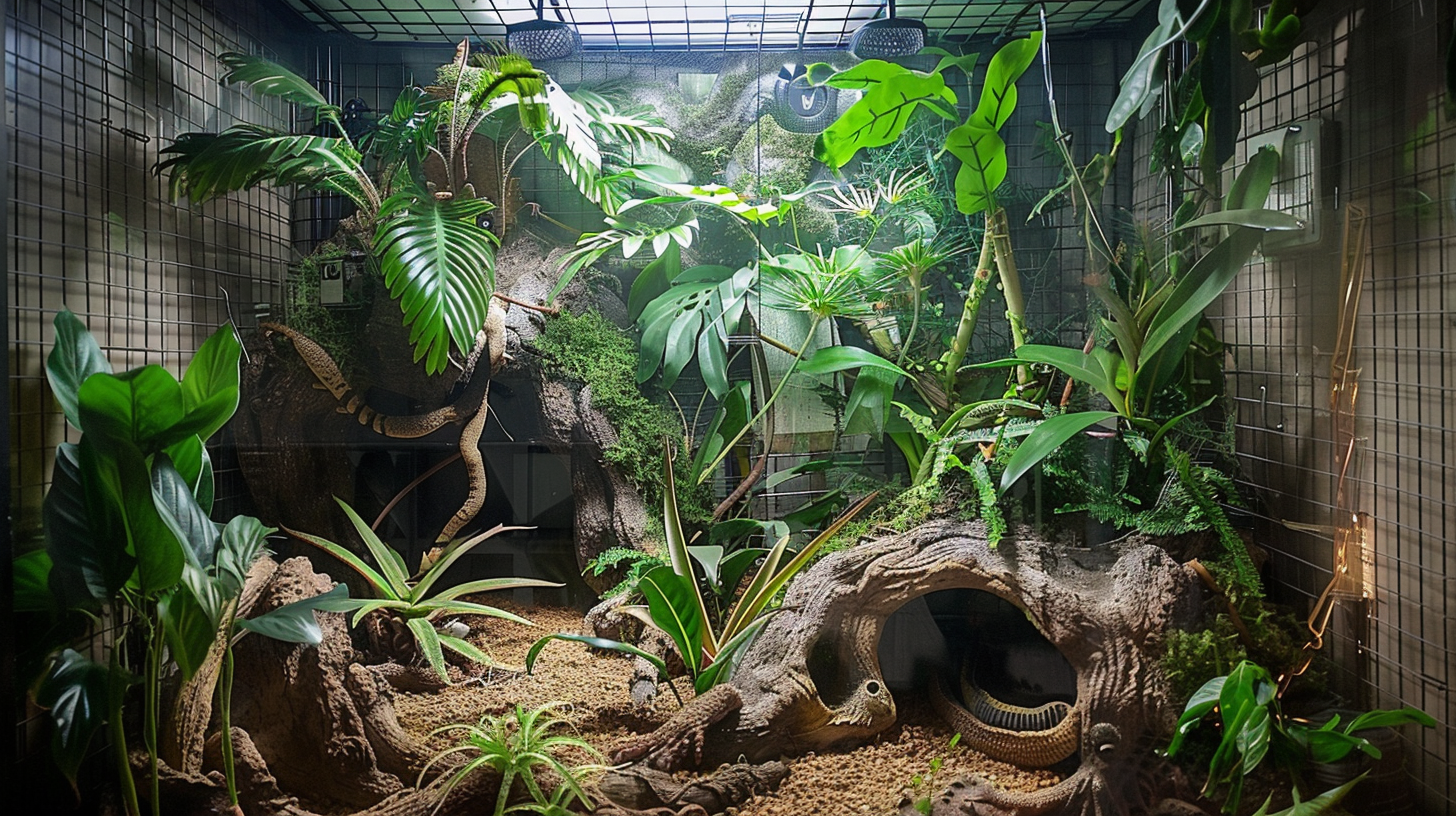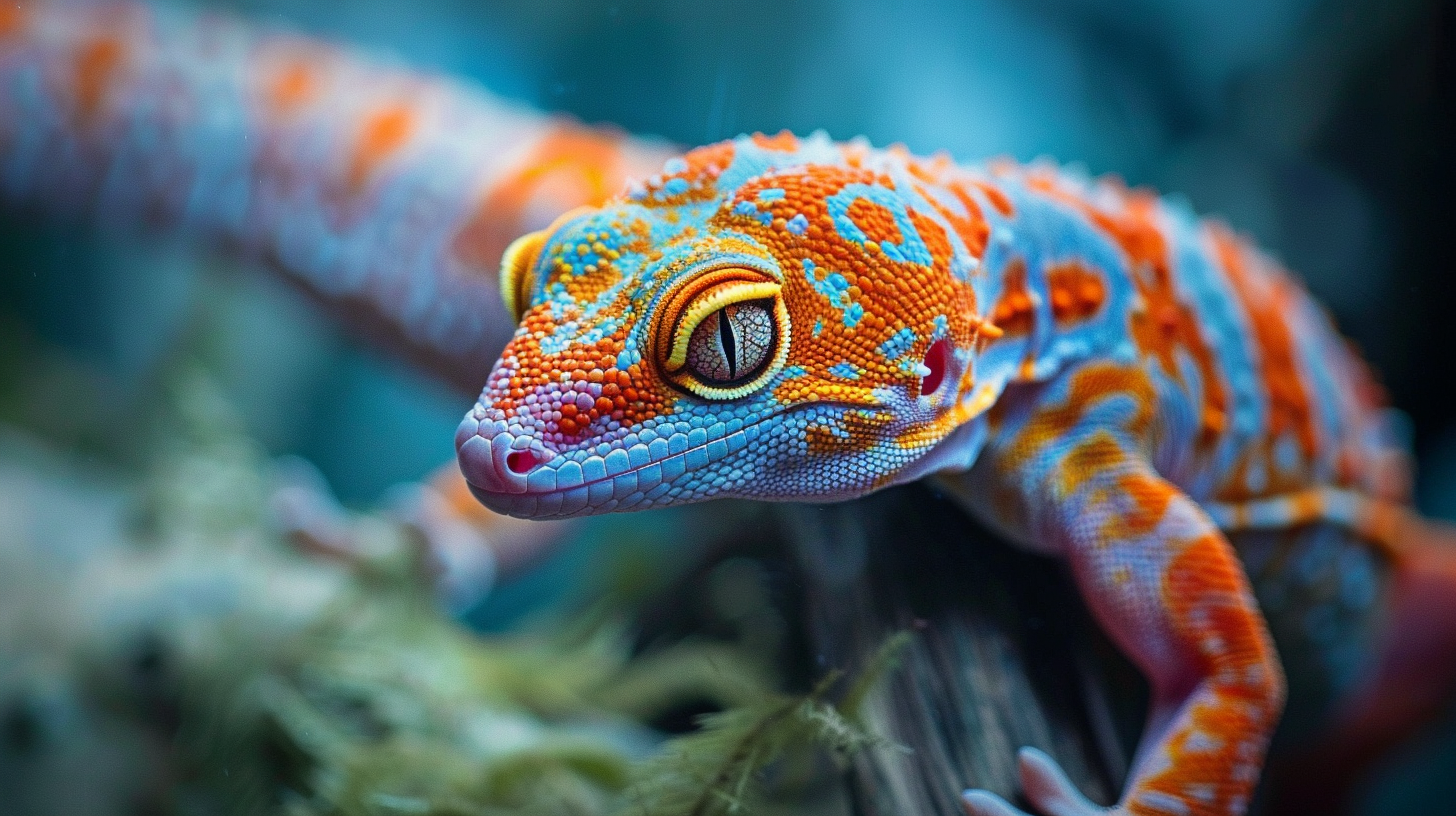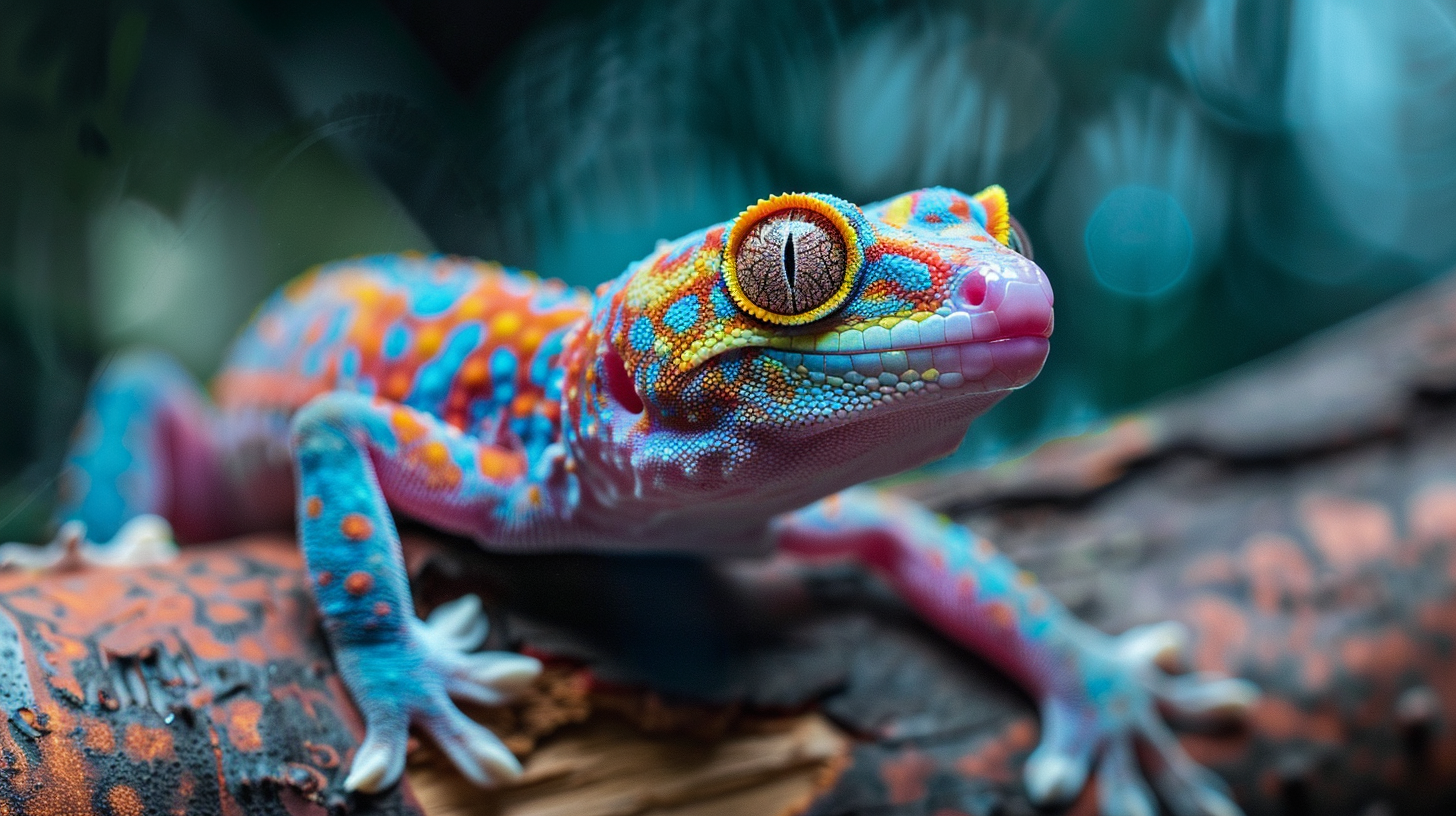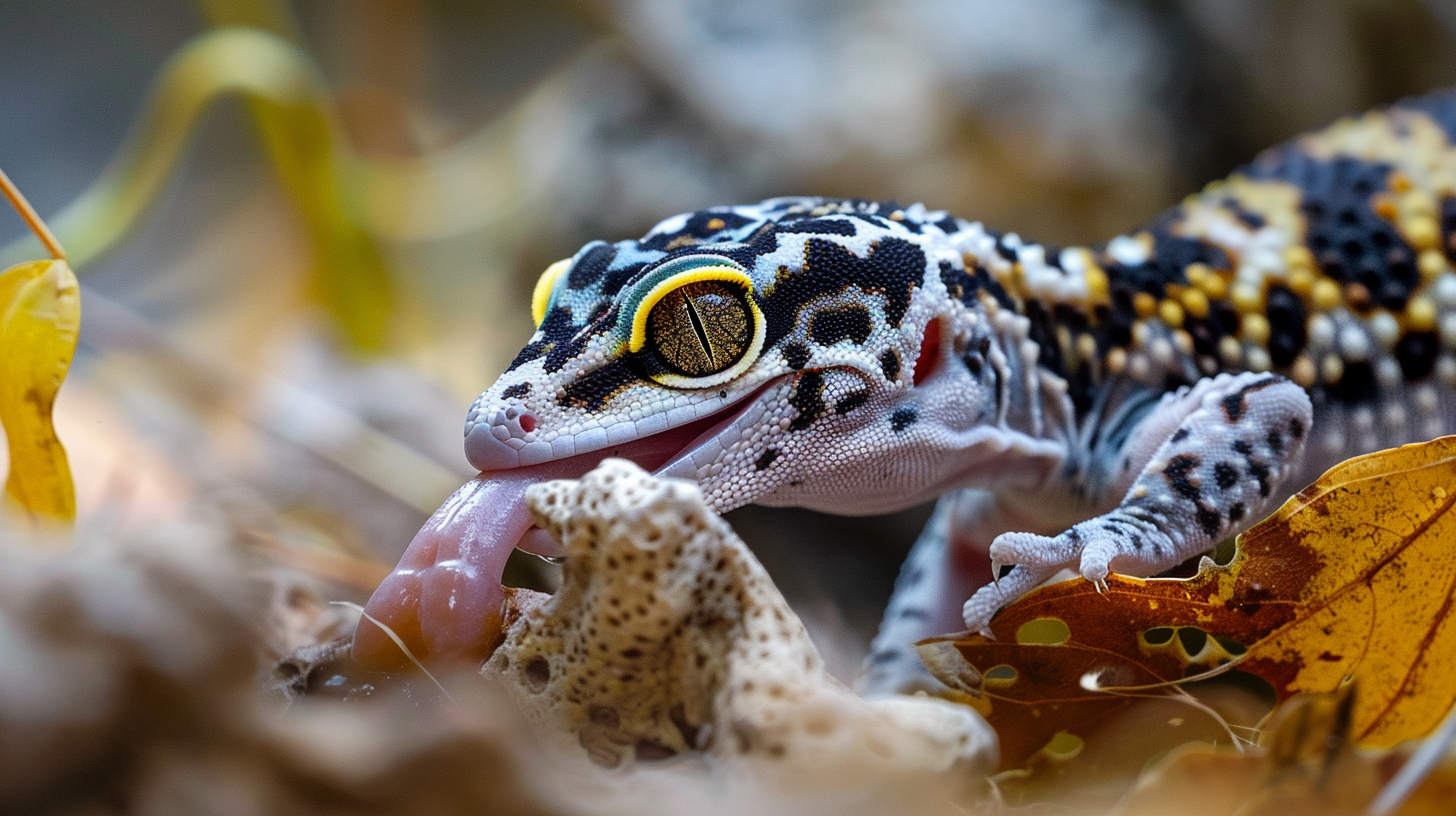Setting Up the Habitat
Creating an ideal environment for your gecko is essential for its health and well-being. This section covers the basics of understanding gecko environments and the importance of mimicking natural habitats.
Understanding Gecko Environments
Leopard geckos, one of the most popular pet geckos, are native to semi-arid desert environments in the Middle East and parts of Northern India (PetMD). These regions are characterized by rocky terrains and warm climates. Understanding these natural conditions is the first step in setting up an optimal gecko habitat setup.
| Region | Climate | Terrain |
|---|---|---|
| Middle East | Semi-arid desert | Rocky |
| Northern India | Semi-arid desert | Rocky |
In their natural habitat, leopard geckos experience significant temperature fluctuations between day and night. This natural temperature gradient is vital for their thermoregulation. Additionally, they are accustomed to having plenty of hiding spots, which provide security and reduce stress.
Importance of Mimicking Natural Habitats
Mimicking the natural habitat of leopard geckos in captivity is crucial for their overall well-being. Recreating an environment similar to their native habitat helps reduce stress, encourages natural behaviors, and contributes to a longer, healthier life (Space Coast Daily).
Key elements to consider when setting up a gecko habitat include:
- Temperature: Providing ample heating is crucial as geckos cannot generate their own heat. Using a heat mat that covers about one-third of the total ground space is effective, creating a warm side and a cooler side for the gecko to regulate its own heat (Leopard Gecko Care).
- Hiding Spots: Leopard geckos thrive when they have access to multiple hiding spots. These can be created using rocks, logs, or commercially available hides. Hiding spots offer geckos a sense of security and help reduce stress.
- Substrate: Choosing the right substrate is essential for maintaining a clean and safe environment. Refer to our section on safe substrate options for more information.
| Key Element | Importance |
|---|---|
| Temperature | Thermoregulation |
| Hiding Spots | Security and stress reduction |
| Substrate | Cleanliness and safety |
By understanding the natural environment and the importance of mimicking it, reptile enthusiasts can ensure their geckos thrive in captivity. For more detailed information on gecko care, visit our article on gecko pet care.
Essential Enclosure Elements
Creating an optimal gecko habitat setup involves understanding and implementing key elements such as size, ventilation, heating, and lighting needs. These factors are crucial for maintaining the health and well-being of your pet gecko.
Size and Ventilation
Geckos require sufficient space to move around and explore their environment. The size of the enclosure should be appropriate for the type of gecko you have. For instance, a single leopard gecko should be housed in a terrarium that is at least 20 gallons.
| Gecko Type | Minimum Enclosure Size |
|---|---|
| Leopard Gecko | 20 gallons |
| Crested Gecko | 20 gallons |
| Gargoyle Gecko | 20 gallons |
Proper ventilation is essential to prevent the buildup of humidity and ensure a steady supply of fresh air. Ensure that the enclosure has adequate ventilation through mesh tops or vents. This helps in maintaining an optimal environment for your gecko.
Heating Requirements
Maintaining the right temperature is critical for the health of your gecko. Geckos are ectothermic, meaning they rely on external heat sources to regulate their body temperature. Leopard geckos, for instance, thrive in a temperature range of 88-92°F during the day, with a slight drop at night.
| Time of Day | Temperature Range |
|---|---|
| Daytime | 88-92°F |
| Nighttime | 70-75°F |
A temperature gradient within the enclosure is crucial. This means providing a warm area and a cooler area, allowing the gecko to move between these zones for thermoregulation. Under-tank heaters and basking lights can help create this gradient. Ensure that the basking spot is at the higher end of the temperature range, while the cooler side remains within the acceptable range.
Lighting Needs
Lighting plays a significant role in a gecko’s habitat. Though leopard geckos are crepuscular, meaning they are most active during dawn and dusk, they still need lighting to regulate their day/night cycle. This is beneficial for their mental health and appetite stimulation (Zen Habitats).
Leopard geckos should have 14 hours of daylight during the summer months, reduced to 12 hours during the winter. Using a smart timer to sync lights with local sunrise and sunset times can be effective. Additionally, providing a UVB light source is essential for their calcium metabolism.
| Season | Daylight Duration |
|---|---|
| Summer | 14 hours |
| Winter | 12 hours |
For more detailed information on gecko pet care, visit our comprehensive guides on various aspects of reptile keeping.
By focusing on these essential enclosure elements, you can create a comfortable and healthy environment for your pet gecko, ensuring they thrive in their habitat.
Choosing the Right Substrate
Selecting the appropriate substrate is essential for a successful gecko habitat setup. The substrate not only affects the aesthetic of the enclosure but also plays a crucial role in the health and well-being of your gecko.
Safe Substrate Options
Several substrates are considered safe for geckos, providing a balance between functionality and safety. Here are some recommended options:
- Paper Sheets and Shredded Paper Bedding: These substrates are simple, safe, and easy to clean. They allow for burrowing, which is a natural behavior for geckos.
- Tiles and Slate: These materials mimic the rocks in a gecko’s natural habitat and are virtually risk-free in terms of causing impaction. They are also easy to clean and maintain.
- Vinyl/Lino Flooring: Similar to tiles and slate, vinyl or lino flooring provides a safe and flat surface that eliminates the risk of impaction. They are also durable and easy to clean.
| Substrate Type | Burrowing Behavior | Risk of Impaction | Ease of Cleaning |
|---|---|---|---|
| Paper Sheets | Yes | None | High |
| Shredded Paper Bedding | Yes | None | High |
| Tiles | No | None | Moderate |
| Slate | No | None | Moderate |
| Vinyl/Lino Flooring | No | None | Moderate |
For more in-depth information on gecko care, visit our gecko pet care page.
Substrates to Avoid
While some substrates may seem appealing due to their natural look, they can pose significant health risks to your gecko. The following substrates should be avoided:
- Sand: Sand is often considered unsafe, especially for juvenile geckos, due to the risk of ingestion and subsequent impaction, which can lead to severe health issues or even death (The Spruce Pets). Sand can also cause respiratory problems and bacterial or mold growth.
- Wood Chips and Shavings: These substrates can cause splinters and are difficult to digest if ingested.
- Corn Cob: This substrate is prone to mold and can be ingested, leading to impaction.
- Walnut Shells: Ground walnut shells are abrasive and can cause gastrointestinal irritation if swallowed.
- Gravel: Small pieces of gravel can be ingested, posing a significant risk of blockage in the digestive tract.
| Substrate Type | Risk Factors |
|---|---|
| Sand | Impaction, respiratory issues |
| Wood Chips | Splinters, ingestion risks |
| Corn Cob | Mold growth, ingestion risks |
| Walnut Shells | Gastrointestinal irritation, ingestion |
| Gravel | Risk of digestive tract blockage |
For additional tips on maintaining a safe habitat, visit our page on gecko handling and taming.
By understanding both safe and unsafe substrate options, you can create a healthy and comfortable environment for your gecko. For further guidance on feeding and other care aspects, check out our article on feeding geckos as pets.
Providing Hides and Decor
Creating a comfortable and enriching environment for your gecko is essential for its well-being. This involves providing hiding spots and enhancing the habitat with decor. Let’s dive into why these elements are crucial for your gecko habitat setup.
Importance of Hiding Spots
Hiding spots are essential for geckos, particularly species like leopard geckos that naturally seek enclosed spaces to sleep, shed, and hide. Providing hides in both warmer and cooler areas of the enclosure is important for their comfort and stress reduction.
| Hide Location | Purpose |
|---|---|
| Warm Side | Heat absorption and basking |
| Cool Side | Temperature regulation and stress relief |
Geckos are accustomed to rocky terrains and warm climates in their natural habitat, which consists of arid, desert-like landscapes with plenty of hiding spots. Recreating this environment in captivity is crucial for their overall well-being. For more information on different gecko species and their specific needs, visit our article on types of geckos as pets.
Enhancing the Habitat with Decor
Adding decor to your gecko’s habitat not only makes it visually appealing but also provides enrichment and stimulation for your pet. The decor can mimic natural elements found in their native environment and contribute to their physical and mental health.
Consider the following decor options:
- Rocks and Logs: These can be used to create climbing opportunities and additional hiding spots.
- Plants: Both live and artificial plants can add to the natural feel of the habitat while providing cover and visual barriers.
- Backgrounds: A scenic background can enhance the appearance of the enclosure and provide a sense of security for your gecko.
When selecting decor, it’s essential to ensure that all items are safe and free from sharp edges. For additional tips on maintaining a healthy and stimulating environment for your gecko, check out our article on gecko pet care.
By understanding the importance of hiding spots and incorporating appropriate decor, you can create an optimal gecko habitat setup that promotes the health and happiness of your reptilian friend. For more insights on handling and taming your gecko, visit our guide on gecko handling and taming.
Maintaining the Habitat
Proper maintenance of a gecko’s habitat is essential for ensuring their health and well-being. Regular cleaning and substrate management help in providing a clean and hygienic environment for your pet.
Daily Spot Cleaning
Regular cleaning of the gecko habitat is crucial to prevent the buildup of waste and bacteria (Space Coast Daily). Daily spot cleaning involves removing visible waste, uneaten food, and shedding skin from the enclosure. This helps in maintaining a clean environment, reducing the risk of infections and unpleasant odors.
Checklist for Daily Spot Cleaning:
- Remove feces and urates
- Discard uneaten food
- Wipe down surfaces with a reptile-safe cleaner
- Check and clean water dish
Providing a humid hide filled with moistened sphagnum moss or substrate can also aid in shedding, particularly for leopard geckos. This is crucial as a dry environment can lead to retained shed skin around their eyes and toes. For more information on gecko care, visit our gecko pet care page.
Substrate Changes and Disinfection
Changing the substrate and disinfecting the enclosure periodically is necessary to maintain a healthy habitat for your gecko. Depending on the type of substrate used, the frequency of changes may vary.
Recommended Frequency for Substrate Changes:
| Substrate Type | Frequency |
|---|---|
| Paper Towels | Weekly |
| Reptile Carpet | Bi-weekly |
| Loose Substrate (e.g., Eco Earth, Coconut Fiber) | Monthly |
Steps for Substrate Changes and Disinfection:
- Remove the Gecko: Place them in a temporary, secure container.
- Discard Used Substrate: Dispose of the old substrate.
- Clean the Enclosure: Use a reptile-safe disinfectant to clean all surfaces.
- Dry the Enclosure: Ensure the enclosure is thoroughly dried to prevent mold growth.
- Add Fresh Substrate: Place a fresh layer of substrate according to the type used.
- Replace Decor and Hides: Ensure all items are cleaned before placing them back into the enclosure.
- Reintroduce the Gecko: Carefully place your gecko back into the habitat.
Regular maintenance not only keeps the habitat clean but also promotes the overall health of your gecko. For additional tips on handling and taming your gecko, visit our gecko handling and taming page.
For optimal gecko habitat setup, it’s essential to regulate temperature and humidity levels correctly. Refer to our section on Regulating Temperature and Humidity for detailed guidance.
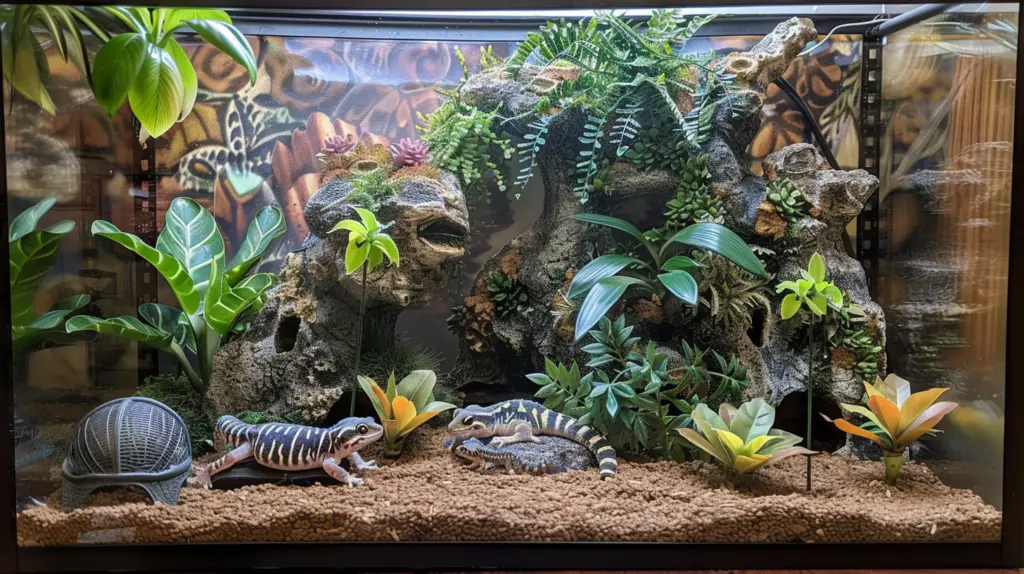
Regulating Temperature and Humidity
Proper temperature and humidity regulation are crucial for the health and well-being of geckos. This section will focus on creating an optimal temperature gradient and maintaining suitable humidity levels, which are essential for an effective gecko habitat setup.
Temperature Gradient
A well-maintained temperature gradient is vital for geckos, particularly for species like the leopard gecko. This gradient allows the gecko to move between different temperature zones to regulate their body temperature. The recommended temperature for the warm end of a leopard gecko’s enclosure is 80-90°F, while the cooler end should be kept at 75-80°F (PetMD).
| Zone | Temperature (°F) |
|---|---|
| Warm End | 80-90 |
| Cool End | 75-80 |
During the day, the temperature should be maintained at 88-92°F, with a slight drop at night. To achieve this, use under-tank heaters and basking lights. Additionally, a UVB light source is essential for their calcium metabolism.
At night, temperatures can drop to around 60°F, which is healthier than maintaining daytime temperatures. In colder climates, a nighttime heat source like a ceramic heat emitter is recommended, but avoid colored night heat bulbs as they can disrupt the gecko’s sleep/wake cycle (ReptiFiles).
Humidity Levels and Shedding
Leopard geckos thrive in relatively dry environments, with ideal daytime humidity levels between 30%-40%. However, higher humidity levels of 70-80% are necessary for effective shedding. This can be achieved by providing a humid hide lined with moistened substrate within the enclosure.
| Condition | Humidity Level (%) |
|---|---|
| Daytime | 30-40 |
| Shedding | 70-80 |
Maintaining these humidity levels is crucial to prevent shedding issues and ensure the gecko’s skin remains healthy. Ensure that the humid hide is kept moist, but not overly wet, to create the perfect microenvironment for shedding.
By carefully monitoring and adjusting temperature and humidity levels, gecko owners can create a comfortable and nurturing habitat for their pets. For more information on gecko handling and taming, feeding geckos as pets, and other care tips, explore our additional resources.
